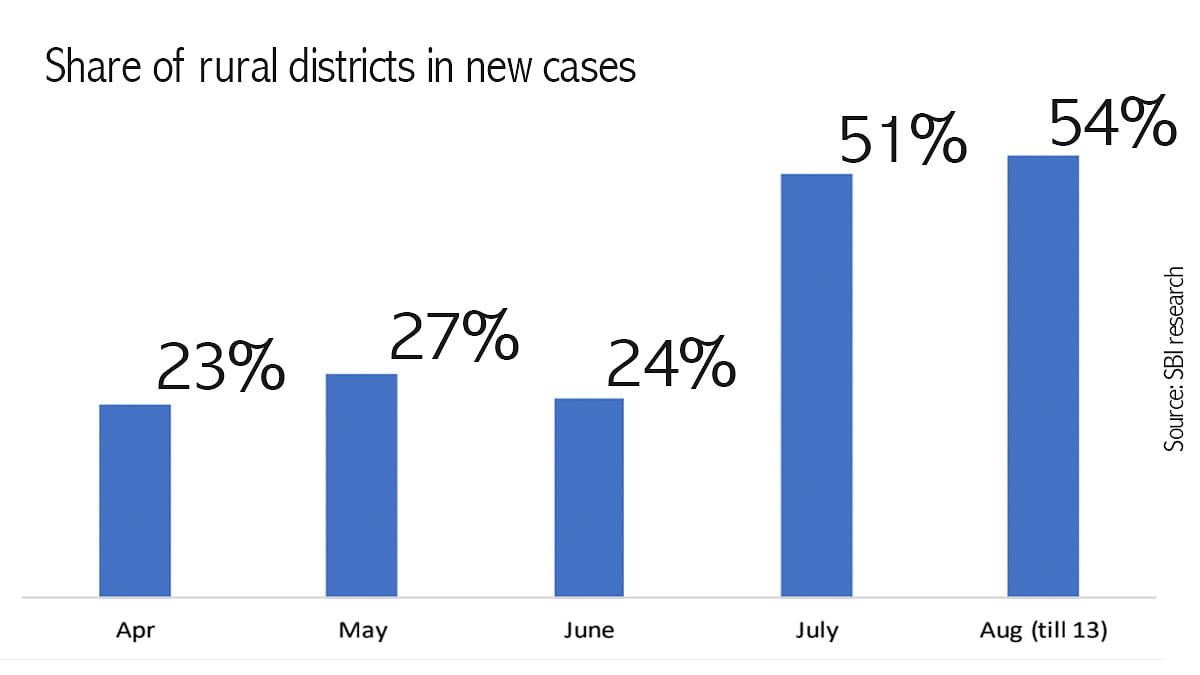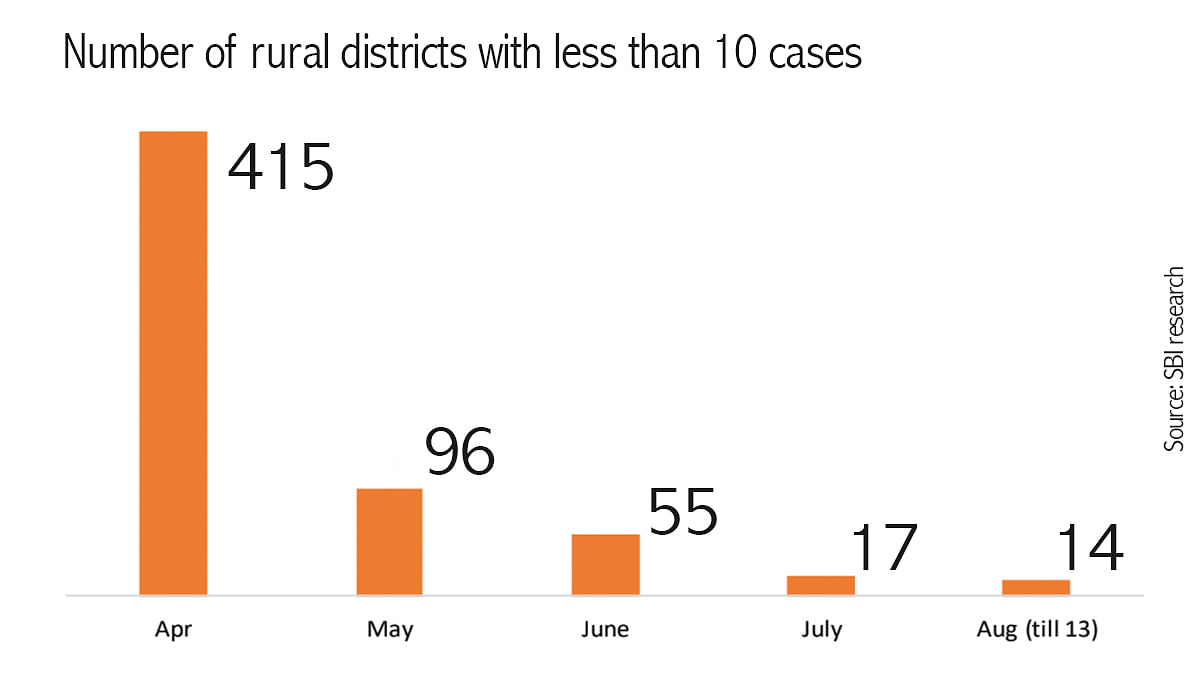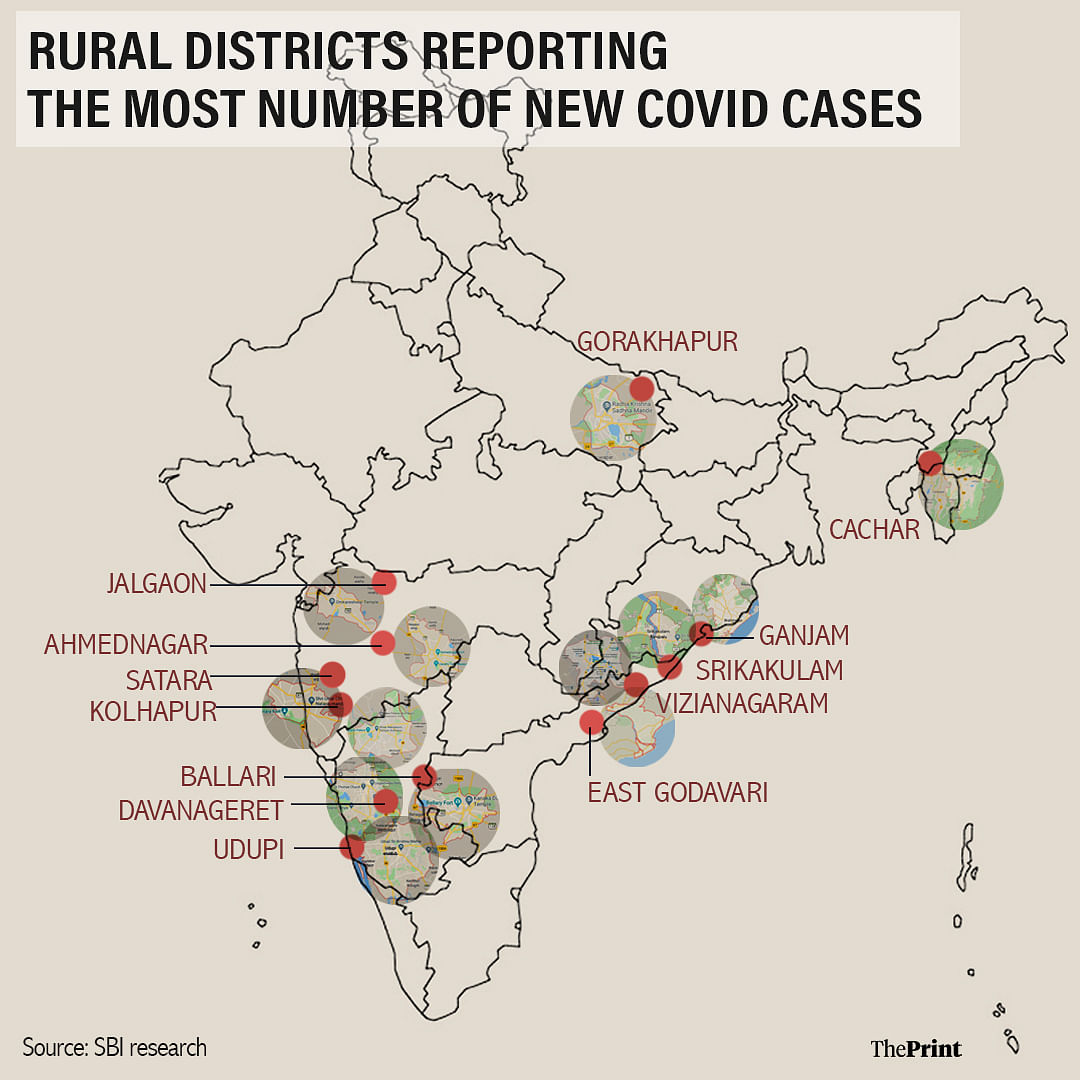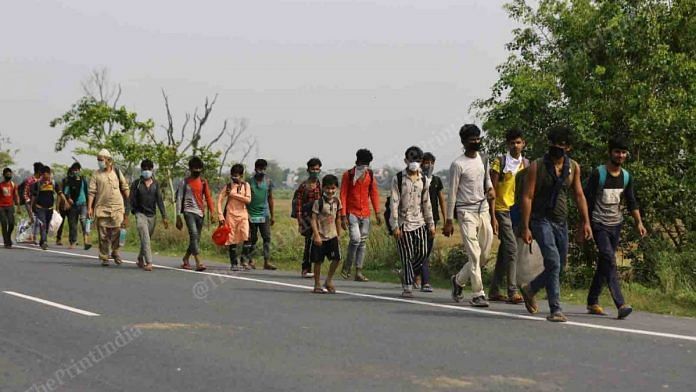New Delhi: In what could threaten India’s rural-led economic recovery, more than 50 per cent of the new Covid-19 cases reported in July and August are from rural districts, according to a report by the State Bank of India (SBI)’s economic research department.
While 51 per cent of the new cases reported in India in July were from districts classified as rural by Census 2011, this share increased to 54 per cent in August (data up to 13 August), according to the SBI report.
In comparison, only around one-fourth of the total cases were from rural districts in the three months of April, May and June.

The analysis, dated 16 August, further showed that Andhra Pradesh, Maharashtra and Karnataka are three states where rural districts are contributing a substantial increase in cases.
India has more than 6.7 lakh active cases, according to the latest data from the Ministry of Health and Family Welfare. The cumulative total of cases stands at over 26.5 lakh, with nearly 51,000 deaths.
The number of rural districts with less than 10 Covid cases has also fallen significantly — to 14 in August, against 17 in July, 55 in June, 96 in May and 415 in April, said the report authored by Soumya Kanti Ghosh, group chief economic advisor at SBI.

Also read: First into the Covid slump, China now proving to be the economy fastest to recover
How the rise has come about
The sharp increase in cases in rural areas has been attributed to the reverse migration seen immediately in the aftermath of the nationwide lockdown announced in March.
Crores of migrants are estimated to have returned to their villages on account of loss of jobs and livelihoods as well as fears over the pandemic.
The agriculture sector has been the least impacted by the pandemic and is expected to register a positive growth in the full year at a time when both manufacturing and services have contracted sharply due to the pandemic and the subsequent restrictions on economic activity.
Economists and the government were hoping for a recovery led by rural demand on the back of a good monsoon and robust sowing and production. However, with Covid now rearing its head in rural areas, the prospects could get grim.
East Godavari in Andhra Pradesh, Jalgaon in Maharashtra, Ganjam in Odisha, Srikakulam in Andhra Pradesh and Ballari in Karnataka are the worst Covid-hit rural districts, said the report.
Other rural districts that are witnessing a surge in cases include Vizianagaram in Andhra Pradesh, Ahmednagar, Satara and Kolhapur in Maharashtra, Udupi and Davanagere in Karnataka, Gorakhpur in Uttar Pradesh and Cachar in Assam.

The report also said the contribution of most of these rural districts to gross state domestic product (GSDP) is 2-4 per cent, pointing to the spread of the pandemic into deep rural hinterlands.
East Godavari district, which has a share of more than 10 per cent in the GSDP, is the only exception.
Covid will lead to negative GDP growth in all 4 quarters
The report painted a grim picture of India’s economic recovery forecasting a negative growth in all four quarters of 2020-21.
The full-year decline in economic growth will be in “double digits”, the SBI research department forecast.
The report added that states like Andhra Pradesh, Telangana, Tamil Nadu, Maharashtra, Delhi, Goa and Punjab will see the maximum loss of output in 2020-21 as a percentage of their GSDP.
Of this, as a percentage of loss of India’s total country output, Maharashtra is forecast to have the largest share at 14.2 per cent, followed by Tamil Nadu, Uttar Pradesh and Gujarat.
Also read: ‘Non-intrusive way’ to catch tax evaders — ministry on move to scan school fee, other payments



